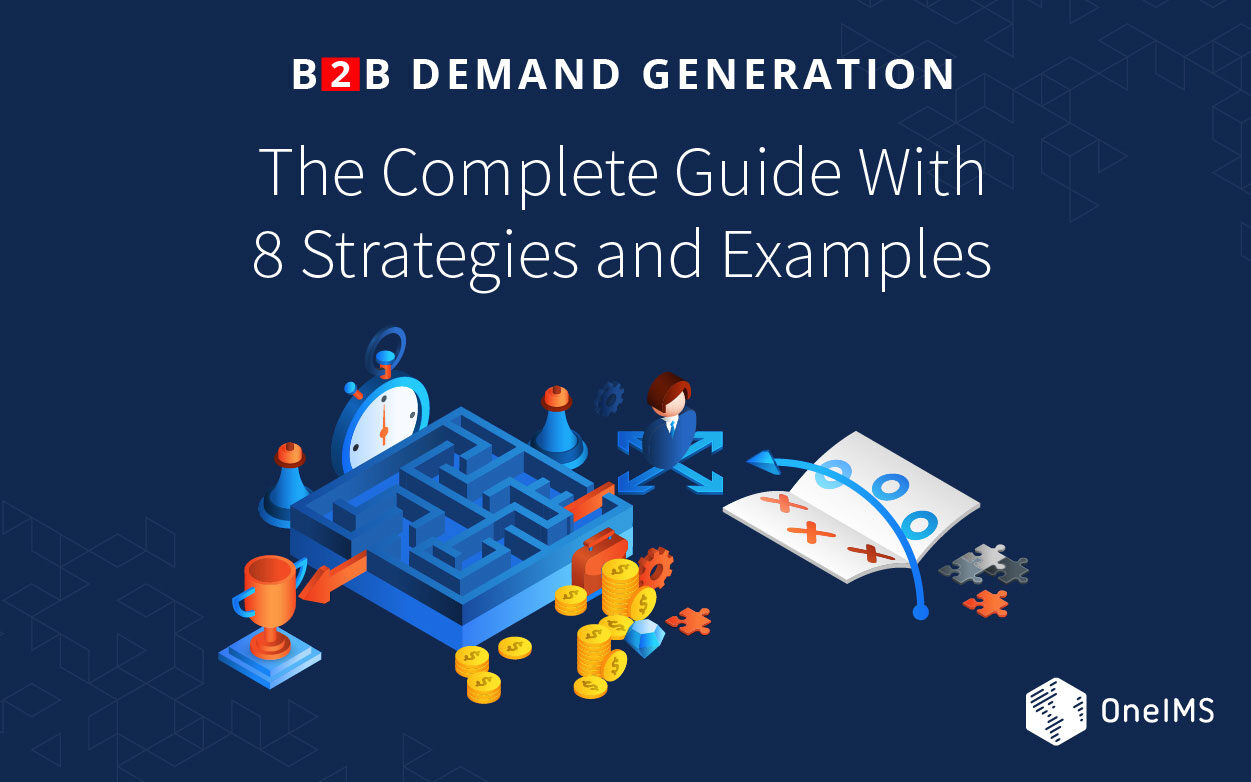Table Of Contents
Is your business getting the attention it deserves?
There’s a skill that business executives and marketing team must master if they want to thrive in this competitive online marketing environment.
That ‘skill’ is the ability to create demand for their goods and services — connecting and establishing trust with their target audience, getting the word out and not necessarily expecting an immediate reward (such as leads or sales).
That’s the purpose of a demand generation campaign and why it’s so powerful for B2B companies.
Demand generation and lead generation are essentially the most important aspects of any B2B marketing strategy.
According to the Content Marketing Institute, 84% of B2B marketers agree that building brand awareness is the most important organizational goal for B2B content marketing.
There’s no way to generate leads effectively and consistently if a business isn’t generating demand — and what’s the essence of building buzz around your brand or product when you can’t translate that demand into qualified leads?
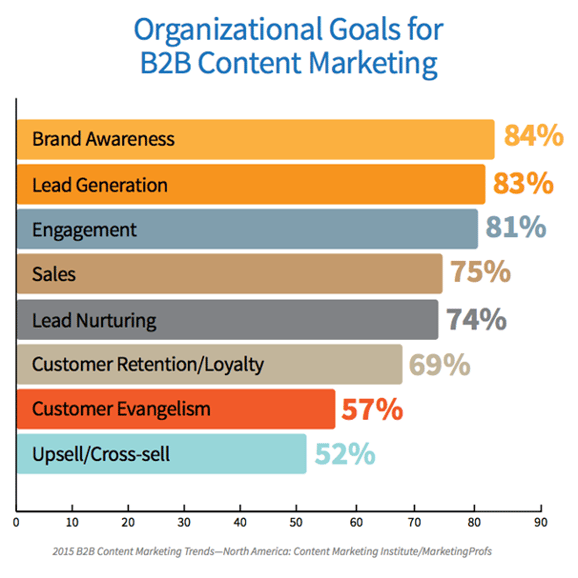
However, there’s a difference between demand generation and lead generation.
Yes, they both share the same end-objectives, but they’re to be approached differently. Many companies like to use the two concepts interchangeably — but it shouldn’t be so.
In this article, we’ll make a clear distinction between both marketing concepts. This would give you the right mindset and position you properly towards getting the most out of your leads.
What is Demand Generation?
In simple terms, demand generation is the process of creating awareness and demand for a business’ products or services.
It’s about getting the word out; connecting with the target audience, telling memorable stories that will captivate the audience, and using a gradual and holistic process to turn prospects into customers.
It’s far-reaching and comes before lead generation.
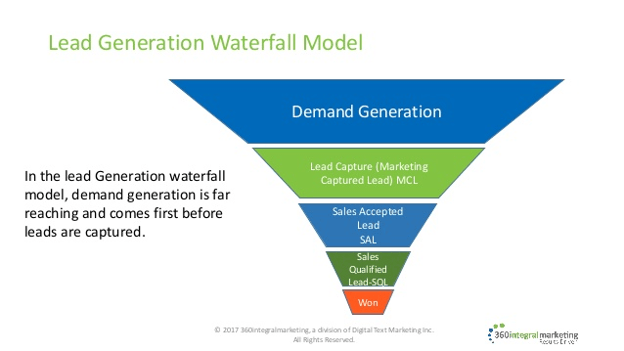
Source: 360IM
What is “NOT” Demand Generation?
Demand generation isn’t all about being everywhere; reaching out with no plan in place. In fact, demand generation has an end-goal of “building interests” around a particular product or solution.
Most of the time, you generate demand about your product so that online users can start searching for it in Google, looking for videos about it on YouTube, checking out blog posts or Tweets about your product, events, or project.
Imagine what brands do when they’re launching a new product to the marketplace. They don’t just generate leads but they spend hundreds of thousands of dollars to inform people and warm-up the ideal buyers.
So, demand generation isn’t an overnight marketing technique but a deliberate effort to inform, educate, and inspire the target audience.
It’s not necessarily for generating revenue. Because that may not happen. However, every effort that a business puts into generating demand will yield results that will translate into sales and revenue, later on.
It’s not a quick fix for generating leads. It takes time and it costs money.
Demand generation can be in the form of:
-
A press release
-
A documentary video
-
A company-sponsored webinar
-
A weekly email newsletter
-
A white paper
-
A meetup event
-
A sponsored scholarship program
And so on…
When you’re generating buzz, it’s not a time to blast an email to your email list. You have to send them valuable information. It’s all about targeting their pain points and touch points, engaging and answering their questions.
If you do it the right way, it means you can build strong demand for new or existing products.
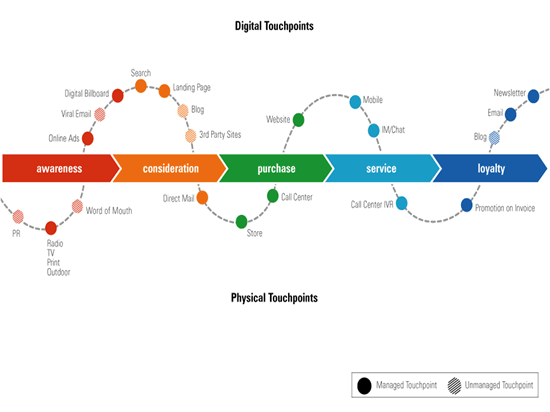
Demand Generation Vs Lead Generation: The Difference
They both share a lot of things in common, but they also differ. Often times, a business may start out with demand generation then move into lead generation.
So what’s the difference?
In demand generation, a business is practically getting other companies, top-level executives, and marketers interested in its offer. It could be an avenue to succinctly pre-sell a product that will soon hit the market.
It gives the B2B marketer the chance to reach and focus on quality leads — that’s the top-most priority.
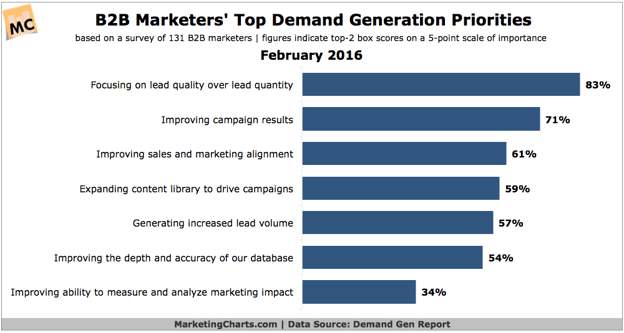
For example, when Apple announces a new iPhone model, often times, they’re generating demand for it because the item hasn’t been fully launched for sale.
At this stage, people will be interested in what the new iPhone can do, its features, as well as what it’d cost.
But they can’t buy it at that time.
Meanwhile, lead generation is the art of transforming ‘that’ interest in prospects and clients into names and contact details.
This is when they become leads.
The marketing and customer service team will now go to work to nurture these leads and turn them into buyers.
Demand generation covers everything from creating awareness that lets a prospect or customer know they have a problem you can solve.
You do this by communicating benefits, increasing people’s trust and confidence in your brand. You also instill in the target audience the need to choose your product/service over the competition.
You share educational, inspiring, and useful thought leadership content to hone your expertise in that field.
One of the elements in demand generation is being able to distribute free helpful resources and tools that will help your intended audience (more on this later).
You may also share influencer posts that further enlighten the audience and hones your brand values.
Once this demand has been initiated and established, lead generation is responsible for translating the interest from all the ‘awareness’ activity into significant and tangible action.
When it’s about creating demand in the industry, a business isn’t particularly interested in capturing contact information from a campaign.
It could but forms will scare most people away. You can always capture contact information when you launch a lead generation campaign.
If the content is gated behind a form and requires the user to enter their email address and first name (optional), then we’re referring to lead generation.
In demand generation, you engage the audience without necessarily asking for their personal details such as email address, first name, phone numbers, etc. Whereas, in lead generation, you create engagement after you’ve captured a prospect’s contact information.
Did you see the difference?
Distributing free content and making it accessible to as many relevant people as possible, is the ultimate aim of demand generation.
Setting a budget aside for this purpose is important since you want to engage people with your awesomeness, and get them to learn more about your business culture, vision, and value.
You want the target audience to appreciate your expertise, and start to consider your business/company as the one that cares.
In turn, people will start thinking about your product and might even tell others about it. You want to eliminate the friction that might get in the way of creating awareness. Make it easy, quick, and convenient for people.
What is a Demand Generation Specialist?
I have established that certain skills are required to establish a brand in the minds of people. But not everyone can do the hard work.
That’s why we have Content marketing experts, Google Ads Experts, Inbound marketing professionals, and so on.
But what about demand generation specialists? What is it all about?
A demand generation specialist or expert is responsible for studying the marketing environment, analyzing data, identifying opportunities, and building an effective system for creating massive demand for products and services; initiating strong interests and working directly with a lead generation specialist or team to turn these interests into sales.
Demand Generation Strategies
Creating the right buzz around your products and services is important. It doesn’t matter whether you’ve been in business for 3 months, 3 years, or 3 decades, your target audience needs to know you exist.
With so many digital marketing strategies, you need to choose your best shot for generating demand. Not all marketing strategies are created equal. Some of them are solely relevant for lead generations, while other strategies should be employed for lead nurturing.
Since the purpose of demand generation is to project your brand in the marketplace as the go-to business in your industry, you need to use a few powerful channels that are designed for that purpose.
Let’s dive in and discover the 8 demand generation strategies you can use right now:
1. Share Your Most Valuable Offer at No Cost
Trust me, this is where a lot of B2B companies get it all wrong. They think that by hoarding their best information, the ideal customers will take them seriously. No way!
In B2B marketing, curiosity doesn’t produce the intended results 95% of the time — because the people you’re reaching don’t make emotional decisions.
For example, if a company CMO sees your product or service and got excited about it, there’s still little that He/She can do. He has to think it through and seek the opinions of other top executives and teams before they ever invest in that product or service — no matter how fancy it looks.
If you’re marketing to individual clients or customers, then you can use curiosity to persuade them right away. Since they can make decisions without logical reasoning, it’s easier to win their trust quicker.
That’s why you MUST give away your most valuable offer when reaching out to top-level executives, CMO, top managers, and organizational heads. Give them the best and they’ll ask for more.
This valuable offer should be given away for free. It can be in the form of an eBook, white paper, free tool, or a free promotional campaign.
Giving away your best information may seem counter-intuitive, but the benefits outweigh the cons. I have a good example for you.
Here’s a valuable “Customer Lifecycle Report” that Ontraport, a CRM and Marketing Automation Solutions Provider gives away for free. It’s well-packaged, colorful, detailed, and provides actionable tips that businesses can use right away.
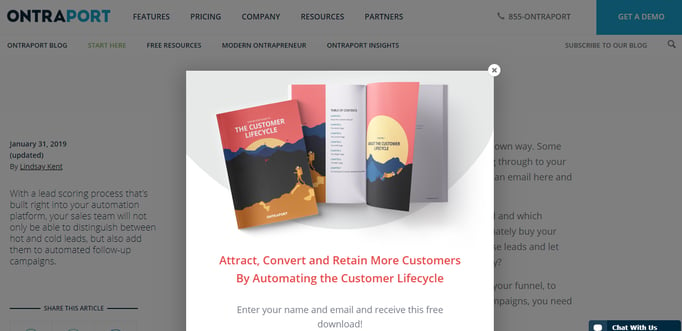
This free but valuable PDF report builds trust between Ontraport and its audience (i.e., businesses that want a CRM software).
Using this approach, founders and CEOs who read the report and benefited from it (even though they paid $00.00) would be more likely to come back to the website and sign up — after a few deliberations or meetings, of course!
Giving away the most valuable information you can find will reflect positively on your brand.
That’s how to get enthusiastic prospects to advocate for your brand on their own accord. They’ll become the elusive brand ambassadors” companies are looking forward to establishing a relationship with.
It goes without saying that offering valuable information for free will cost your business some money.
It sure will — but that’s why demand generation is daunting for most companies. They find it difficult to invest in a marketing campaign that may not result in new leads or customers. Just brand awareness which is intangible!
When you give away valuable information without pushing too hard to get capture people’s contact information, psychologically, these people would want to keep in touch with your brand.
They’d want you to qualify them as a valuable lead, hence, it’s always great to have a way of keeping in touch with them on your website, landing page, or via your social media pages.
2. Give Away a Premium Tool or Resource
When it comes to B2B demand generation, there’s a difference between “giving away free information” and “giving away valuable information for free.”
The latter is what your business should do because your target audience will perceive the value you’re offering them.

Source: ShareThis
Here’s why you should give away a Premium tool:
Any business can give away free information. A blog post, for example, is free information. But does it offer tremendous value? To a large extent, it doesn’t.
But imagine spending money to get a premium tool developed for your business. Then you turn around and give it all away without asking for money or contact information.
This is one of the most effective demand generation strategies that’s working so well today — WordStream, HubSpot, and several other B2B companies are using it.
But don’t take my word for it, here’s a premium tool: “Blog Topic Generator” that HubSpot uses to initiate communication with its audience.
For businesses that are struggling to come up with new topics to write about, HubSpot makes it easy with their tool. Simply enter a noun (preferably your main keyword) and the tool will generate relevant and catchy blog post titles.
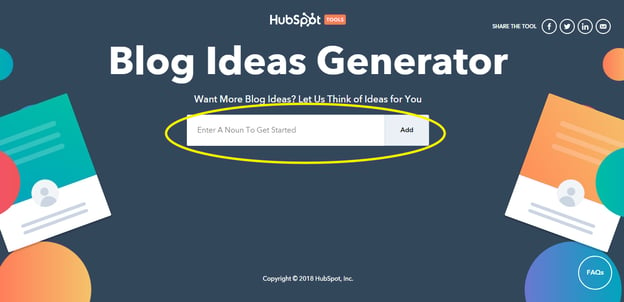
For example, I enter the noun “Traffic Generation” and here’s one of the topics I got from the tool. Isn’t it worth it?

The smart guys at WordStream also have their own premium tool given away for free to build interests in the prospects’ minds.
The “Free Google Ads Performance Grader” gives you an insider look on your Google Ads campaign and how it’s performing.
Trust me, this tool is so powerful that charging for it would’ve been worth it. But again, that would defeat the whole purpose of demand generation.
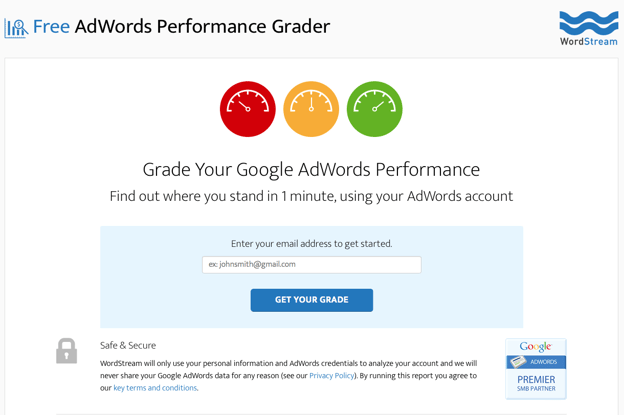
The company started using it in 2011 and it’s been awesome for creating demand for their services.
Not only has it helped the company to win more business on the long-run, but it has also helped a lot of businesses that are advertising on Google Ads platform to audit their PPC accounts and take steps to improve their campaigns.
You can only imagine how much impact your business and brand will make when you give away your best stuff.
Advertisers find the tool helpful since they can grade their Google Ads (formerly Google Ads) in order to strengthen and solidify the performance of their performance both on the Search and Display Networks.
Apart from a premium tool giving away for free, your business can also utilize helpful resources for demand generation. This resource can be in the form of a well-designed comprehensive guide on a given topic.
That’s exactly what Help Scout does with their high-quality Webinars. They created a dedicated page for recorded webinars. That means a company executive who didn’t get a chance to attend the live webinar can still watch it for free. That’s a helpful resource that gets the prospect interested in what you have to say next.
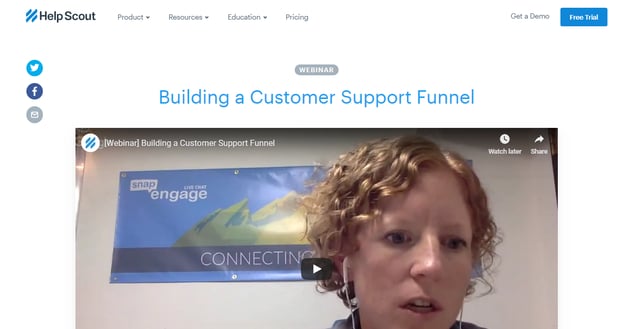
Here’s what you should know:
When it comes to demand generation, you don’t have to create new content or spend extra cash modifying an existing one, what you should do is to take what’s already popular and make it easily accessible to your audience.
If you don’t have a recorded webinar, what about a collection of YouTube videos that addresses a particular topic in your niche.
How about free chapters of your book? An infographic that’s detailed could work if you did a great job with the data.
Think outside the box. A lot of lead magnets will produce results for you.
Bear in mind that these helpful materials that you’re giving away have the potential to bring in new leads and sales. So when that begins to happen, don’t be surprised. It’s all tied to the end-goals.
3. Leverage Facebook Lookalike Audiences
First and foremost, Facebook‘s Custom audiences give advertisers flexibility in targeting customers of their journey. From the awareness stage to the consideration stage to the conversion stage and post-conversion stage.
Advertisers are able to show ad campaigns to users who are already interested in and familiar with your brand.
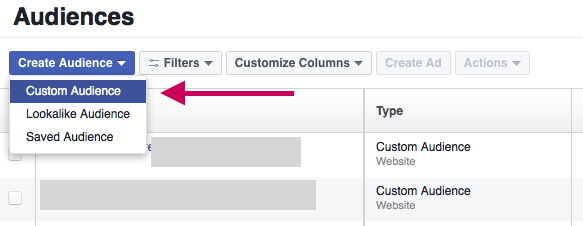
These are mostly high-value audiences, which consists of people who have interacted with your brand in the past. Maybe they have purchased from your website, subscribed to your email list, or viewed your product page.
Custom audiences are responsive because they’re no longer strangers to your brand. That’s why they yield higher CTRs and conversion rates.
The problem:
You cannot reach people who have never interacted with your business before. This is a drawback because you’re confined in a cubicle — only advertising to people whom you have interacted with before.
That’s why Lookalike audiences are great targeting options on the Facebook advertising platform. When you target lookalike users, you’re connecting to cold traffic which is great for creating brand awareness and generating demand for your products and services.
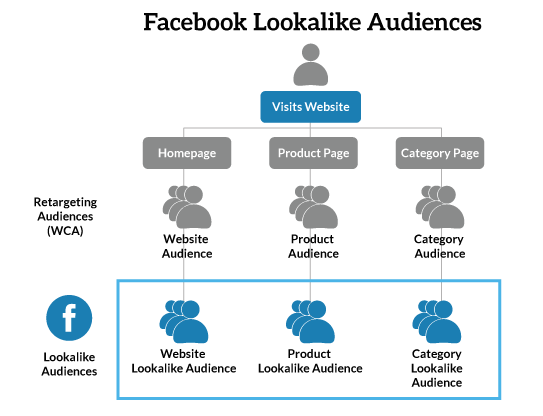
Source: StitcherAds
So what are Lookalike audiences?
You can easily tell from their name. Okay, Lookalike Audiences are custom audiences that looks like users who have already interacted with your websites, brand, and products.
This is often based on demographic and behavioral similarities.
Facebook makes it possible for you upload custom audiences created using relevant data which you’ve collected from your actual users, and create lookalike audiences that act, behaves, or share similar characteristics.
One of the significant pros of lookalike audiences is that it enables you to reach more people on Facebook with your ad campaigns by using the enormous and valuable user data that Facebook has generated over the years.
Your reach, to an extent, will depend on how large your custom audience is when you upload it on your Facebook ad manager. With Lookalike audiences, you’re casing your net wide and spreading your tentacles.
Lookalike audiences make demand generation a bliss. Come to think of it, you’re literally reaching hundreds of thousands of new audience who will connect with your brand in a short while.
Some of them will visit your website and decide to sign up. The earlier you start using Lookalike audiences on Facebook, the more impact you’ll make for your brand.
Banana Republic, an eCommerce brand leveraged Facebook Lookalike audiences to dramatically grow their brand.
They used it for demand generation and customer acquisition. When compared to their display ads on other advertising platforms, Lookalike audiences on Facebook increase CTR by 60% and boosted sales for their Winter Wears.
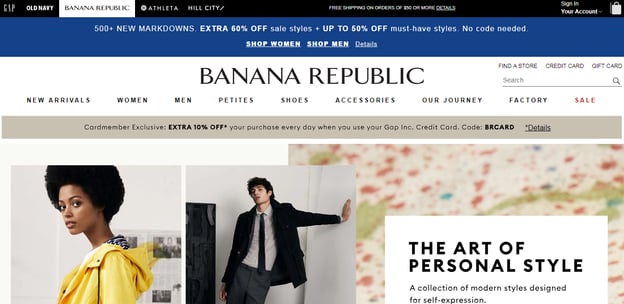
4. Create Useful Blog Posts
Are you using your company’s blog should generate demand for your products and services?
A blog is an essential addon to your corporate website. The truth is that no one cares about your website if you’re not providing value.
With a blog, you can create helpful content to educate your target audience.
While this section isn’t geared at detailing everything you can do with a blog, just bear in mind that by consistently creating new and valuable blog posts, your website will generate organic traffic and prospects.
You start by identifying the problem that your audience is facing. Then you create articles to address the problem and provide answers.
You should have some of the answers, if not, you shouldn’t be in business in the first place.
Here’s a typical blog post on OneIMS that solves a problem of “bounce rate.” As you can see, the post first identifies the causes of the problem, then provides a solution.
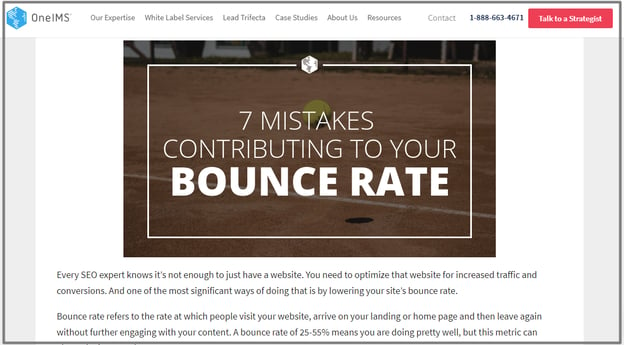
The article begins by describing a typical life of a website owner and what they want to achieve, then it defines Bounce rate, highlights the 7 mistakes contributing to it, then wraps up with solutions.
If you don’t know the issues that your target audience are facing, you can always reach out to your sales and customer support teams.
There’s a chance they will have a list of frequently asked questions you could use to conduct further research and create meaningful blog posts.
Don’t underestimate the power of blogging and its potentials. Several B2B companies have used blogging to grow their customer base and even attracted investors.
Through strategic content creation, your company would be seen with a different lens altogether. Angel investors read blogs and understand high-quality and thought leadership content from garbage.
Blogging is all about contributing to the ‘greater good’ through meaningful and helpful content. According to research, 45% of people say they trust a business that contributes to the improvement of lives.

And that’s exactly what most investors are looking for. They want to see companies that are truly helpful. A company that supports humanity will always thrive irrespective of the competition.
Edward Williams, a partner at Brook Venture Partners, says that he takes blogging seriously before considering the possibilities of investing in a company. He says he even though he looks at the standard data, he also treats blogs differently.
Does the company have a blog?
If yes, what’s the type of content they publish consistently? Does it reflect the true value that the company represents? Edward looks at the quality of the blog to judge how smart the founder is.
Although blogging is often regarded as an informal medium, Edward takes it seriously.
In his words:
I want to know this company. I want to see disparate posts that are not affiliated with the company,’ he says. “I want third-party content that evaluates a product or service.”
Blogging truly words for B2B demand generation and customer acquisition.
BrightPlanet, a data-as-a-service (DaaS) company leveraged internet marketing to help create brand awareness and reach people worldwide — since they offer their products all over the world and works with a small team.
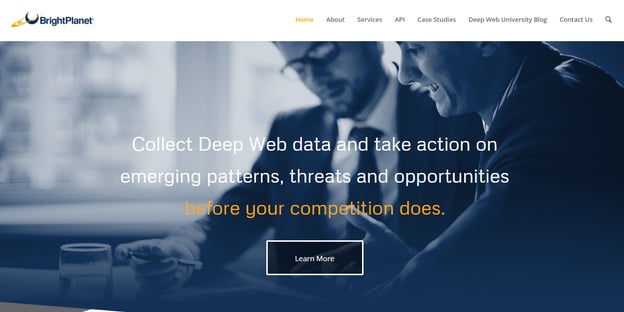
They planned to generate demand for their products and capture interest and leads as well.
Given that the company’s products and services are a bit complicated, the marketing team has to devise a way to break down complex information into easy-to-chew content.
So, here’s what they did:
The team identified frequently asked questions they received from customers. Then, they invested in high-quality blog posts for their blog to answer these questions.
In 12 months, visits to BrightPlanet’s website grew by over 300%, organic traffic increased by 1,500%, and the company captured more than 2,000 online leads from their blog posts.
5. Host Industry Influencers on Your Webinars
Survey results show that 62% of all B2B marketers now utilize webinars for prospecting and lead nurturing. And webinars are the second most effective content types for lead generation, according to 50% of respondents.
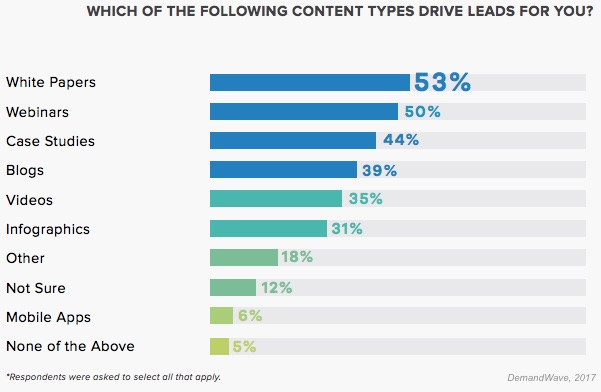
Your business can host a live webinar once, then reuse it multiple times to drive engagement, demand, leads, and sales.
Since the majority of webinar registrants don’t watch the live webinar, 94% of webinar hosts make the event available on-demand after the live event.
Webinars are resourceful content that can be great for demand generation. If you have never hosted a webinar before, it can be daunting because of the technology that’s involved.
However, they’re relatively easy to produce and you can reuse the recorded webinar as a lead magnet for lead generation and for engaging leads at the middle of the funnel (the consideration stage).
One thing to bear in mind when using webinars for demand generation is commitment. According to research, people will only be committed to one webinar in a week.
B2B companies are using Webinars because the conversions can be as high as 46%. Marketing webinars tend to convert lower. Internal communications webinar has the highest conversion rates.
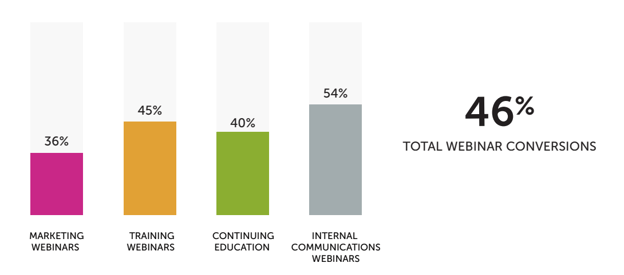
That means you have to make it the best. Essentially, you want to partner with industry influencers who have loyal followings and strong brands.
Don’t do webinars with a half-baked approach. Most businesses just do it by the side — forgetting that webinars alone can generate a lot of interest around their new product and even pre-sell it.
When you collaborate or partner with industry giants, it increases your business’ position in the industry.
Here’s a good example: Liz Frailey partnering with Rev Ciancio on a Google My Business webinar titled “The Complete Guide to Managing Your Business Listing On Google.”

More importantly, you’re able to forge meaningful, valuable, and long-term connections with key influencers. These are all important for an ongoing demand generation strategy.
Don’t get me wrong, I know how hard it is to send an email to Michael Hyatt and asking him to join your next webinar.
He’s probably received several emails from some other businesses. It takes time and effort to establish relationships. It’s may be hard in the beginning to get a “yes” from an influencer but keep at it.
If you make your proposals valuable, especially to the industry influencer and how it can help them on the long-run (note: industry experts are always thinking of the long-term effects), then you’ll definitely impress them.
If your business is just starting out, with no reputation online, one thing you can do is find bloggers who host podcasts and YouTube channels.
Get interviewed and then take it up from them. Some of these first contacts may want to partner with you on your webinar. The sky is just the limit.
6. Leverage Display Ads on Relevant Platforms
Display advertising is arguably the most controversial demand generation technique for B2B marketers.
Of course, it has its own limitations (and clear advantages), but many online marketers don’t even consider Managed Placements in their Display Network campaigns.
That’s why you should take advantage of it today.
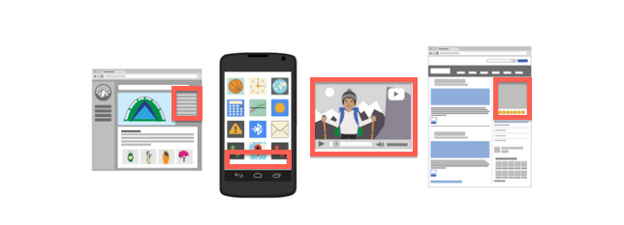
In case you’re new to Managed Placements, they are features that enable Google Ads advertisers to control where their display ads are shown, and even control the audience that sees it.
With this powerful feature, an advertiser can focus on recipients who are more likely to respond to the ads.
These are similar to Lookalike audiences on Facebook ads campaign. They’re a more targeted form of display advertising, rather than the typical Google ads that tend to reach everyone and their grandma.
Businesses that utilize display campaigns to create brand awareness knows that “relevancy” is the key. That means targeting only websites where the target audience frequents.
For example, if you want to effectively reach tech enthusiasts in general, you might want to target media sites like Lifehacker, Mashable, Techcrunch, Gizmodo, CNet, etc.
These sites generate a lot of traffic and active readership.
You’re not necessarily looking to capture users’ contact information from display campaigns (though it’s always nice) but rather to create momentum, promote a brand, both of which are the hallmarks of display campaigns.
NameCheap, the popular domain name registrar uses Managed Placements in Google ads campaign to raise awareness for their domain name service.
They chose Techcrunch as their display hub since most of the readers would be interested in getting a domain name (now or in the nearest future).
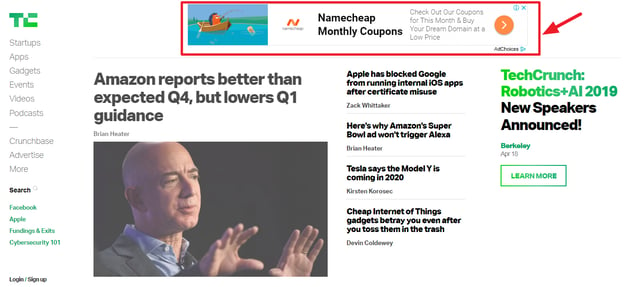
Using Managed Placements, you can easily tap into these invaluable benefits coupled with additional control over the recipients of your ad, which means you’re not wasting money on ad clicks.
7. Use Display Remarketing to Generate Demand
At OneIMS, we’ve seen the immense power of remarketing especially when we take on a B2B company.
We know that remarketing can be an effective strategy for building brand awareness, increasing conversion rates, while meeting the needs of your audience.
Remarketing works.
Do you want some proofs? Okay, here we go:
Just Media, Lumension, a thought leader in endpoint security software realized their paid marketing goals through remarketing.
Lumension mixed both online and offline strategies to get massive results. With the help of a marketing agency, the security software company generated a demand for its products and increased revenue.
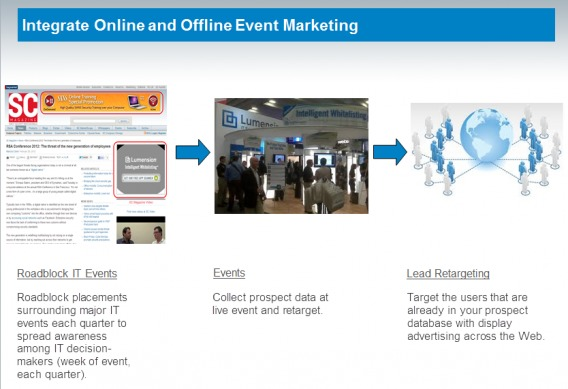
As a business, you’re ‘already’ losing money when you’re not retargeting your audience. When you run ads on Facebook or Google, there’s a chance that the majority of your clicks will NEVER result in a purchase.
So what do you do?
Do you fold your arms and watch potential leads slip off your funnel (assuming they even got there in the first place)? Once the visitors click your ad and leave, they’ll never return.
The best way to retain or convert traffic into strong desire, interests, sales, and revenue is through retargeting.
By using display retargeting for building brand awareness, you’ll dramatically increase conversion rates over time. A Health Insurance Company with more than 4,000,000 million enrollments needed to tap into this huge customer base.
When they started retargeting, click-through rate and conversion rates almost tripled in less than 3 months. More so, their speed dynamic ads performed better than others by 2x margins.
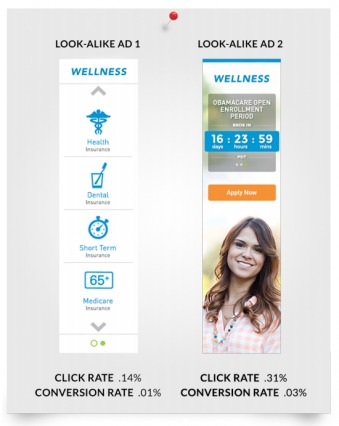
As you can see from the ad above, the company created a lookalike audience before executing its display retargeting strategy. And it worked like magic!
Conclusion
Demand generation has become a must for B2B companies and marketing team.
When you consider the immense opportunities available online, with video sites like YouTube having over a billion users — which is roughly a third of the entire world’s population — it’s not surprising why brands are investing a lot into creating Brand Awareness and Positioning in their respective markets.
B2B companies can drive incredible demand for their products and services by creating sharing helpful written content (e.g., blog posts, articles), videos, and packaged materials (such as white paper, resources, eBooks, reports).
If they remain consistent with content creation and content distribution across touch points that matter to the target audience, there’s no stopping the brand from attracting establishing a strong brand and customer base.
That’s exactly how multinational companies like AT&T, Uber, Emirates Airlines captured the market and has since remained unshakable — even in the face of intense competition.
At the end of the day, it boils down to how much content you can create. Because when you create better content in large quantity, you can reach more people.
If you don’t have enough time to create content yourself or don’t know how to go about it, it may be time to hire a content marketing team.
High-quality content doesn’t necessarily require expensive tools and a huge financial investment, so do the best you can with the resources at your disposal.

